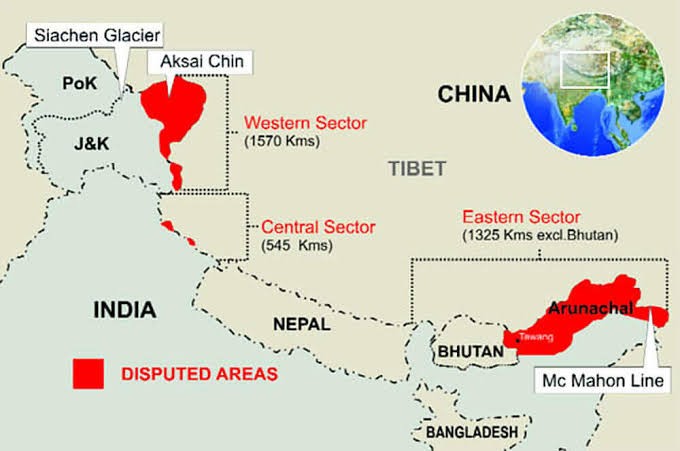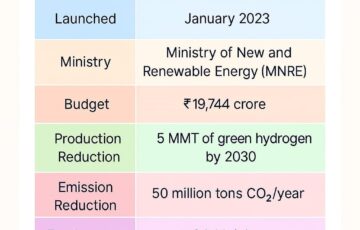India-China Patrolling Pact
Syllabus:
GS 2:
- India and its Neighbourhood relation.
- Bilateral and regional grouping and Agreements involving India.
Focus:
India and China have recently agreed on patrolling arrangements along the Line of Actual Control (LAC), aiming to reduce military tensions and facilitate future disengagement after their 2020 border standoff.
Evolution of India-China Relations
Early Cooperation (1990s-2013):
- To avoid a repeat of the 1962 border war, India and China set aside border disputes, prioritizing economic growth.
- They collaborated on issues like terrorism and Afghanistan, building mutual understanding.
Divergence in National Interests (Post-2013):
- China, under President Xi, pursued assertive policies—boosting global tech, expanding the Belt and Road Initiative, and strengthening domestic security.
- This shift raised concerns in India, fueling insecurity over China’s growing influence.
Current State of India-China Relations
- Key Tensions:
- Relations are strained by border disputes, trade imbalances, China’s alignment with Pakistan, and contrasting regional ambitions.
- The June 2020 Galwan Valley clash eroded strategic trust, undermining decades of negotiated border-management protocols.
- Geopolitical Impacts:
- The Ukraine conflict has strengthened China’s ties with Russia, creating complexities for India, given its defense relations with Russia.
Road to Agreement
- Constructive Response: Prime Minister Modi’s statements on improving ties prompted China’s positive response, expressing interest in normalizing the border situation and enhancing bilateral relations.
- Chinese Perspective: China stressed that relations with India are broader than the border issue alone, signaling diplomatic readiness to handle ongoing disputes constructively.
- Optimistic Outlook: External Affairs Minister Jaishankar highlighted a hopeful outlook for settling LAC issues, emphasizing that patrolling rights are central to resolving ongoing border tensions.
- Diplomatic Engagement: Regular bilateral talks have supported trust-building measures, providing a framework for addressing critical issues and sustaining diplomatic dialogue.
- BRICS Interaction: During the BRICS summit, Modi and Xi discussed their concerns, yet China’s official communication lacked explicit mention of the patrolling agreement, signaling cautious optimism.
Question of Patrolling
- Core to Border Management: Patrolling practices are crucial to maintaining peace along the LAC, with each side observing established protocols to avoid unnecessary confrontations.
- Unmarked Boundaries: Given the lack of a physically marked boundary, Indian troops regularly reach perceived border points, leaving symbolic markers to assert their presence.
- Behavioral Protocols: The 2005 border agreement outlines protocols for face-off situations, with both sides committed to non-escalation through mutual restraint and diplomacy.
- Promoting Non-Aggression: The protocols encourage courtesy and prevent use of force, ensuring that face-offs do not lead to significant clashes or further border tensions.
- Incident Prevention: These measures aim to avoid repeat incidents like the 2020 Galwan Valley clash, promoting a safer, more predictable border interaction environment.
Contours of Agreement
- Restoration of Patrolling: India and China agreed to resume patrolling in the Depsang Plains and Demchok, allowing troops access to legacy areas and reasserting bilateral rights.
- Reviving Access Points: Indian soldiers can once again patrol up to specific points in the Depsang and Demchok regions, restoring pre-2020 arrangements for better control.
- Orderly Demilitarization: Disengagement and de-escalation will happen gradually, reducing the sizable troop presence along contested regions in a phased manner.
- Grazing Resumption: The pact allows resumption of traditional grazing activities by local communities, restoring normalcy to regions impacted since the 2020 standoff.
- Sequential De-escalation: The agreement is structured to prioritize safe patrolling first, with gradual steps toward full de-escalation and eventual demilitarization of the border areas.
Modi-Xi Endorsement
- High-Level Approval: The endorsement by Modi and Xi lends significant weight to the agreement, signaling commitment to resolving LAC issues through sustained engagement.
- Pathway to Stability: This endorsement is seen as a stepping stone towards reducing LAC tensions, potentially paving the way for normalized relations in the coming years.
- Gradual Progression: Officials underscore the importance of a step-by-step approach to ensure that both countries steadily progress toward normalized interactions.
- Strategic Trust Building: The endorsement signals mutual strategic trust, encouraging both nations to handle contentious issues diplomatically and minimize border conflicts.
- Close Monitoring: The agreement includes provisions for careful monitoring, allowing both sides to address issues early and prevent escalation along the LAC.
Caution and Next Steps
- Divergent Positions: While India emphasizes complete disengagement, China remains cautious, only noting progress without committing to specifics on disengagement at LAC.
- Trust and Verification: Given past experiences, Indian strategists adopt a “trust but verify” approach to assess China’s adherence to the agreed-upon patrolling arrangements.
- Consistent Bilateral Stance: India maintains that normalization of diplomatic and economic ties with China hinges on the full resolution of border-related issues.
- Future Dialogue Channels: India proposed early meetings of Special Representatives to expedite discussions on a fair and mutually agreeable solution for the boundary dispute.
- Long-Term Patience: Analysts expect the complete disengagement and de-escalation process may span years, requiring both countries to exercise patience and diplomatic discipline.
Conclusion
The India-China patrolling agreement marks significant progress toward de-escalation along the LAC. While cautious optimism exists, strategic trust-building remains essential to fully normalize relations, preventing future conflicts and ensuring sustained peace.
Source: Indian Express
Mains Practice Question
Evaluate the strategic implications of the recent India-China agreement on patrolling along the LAC. How could this development impact bilateral relations and regional security dynamics?





